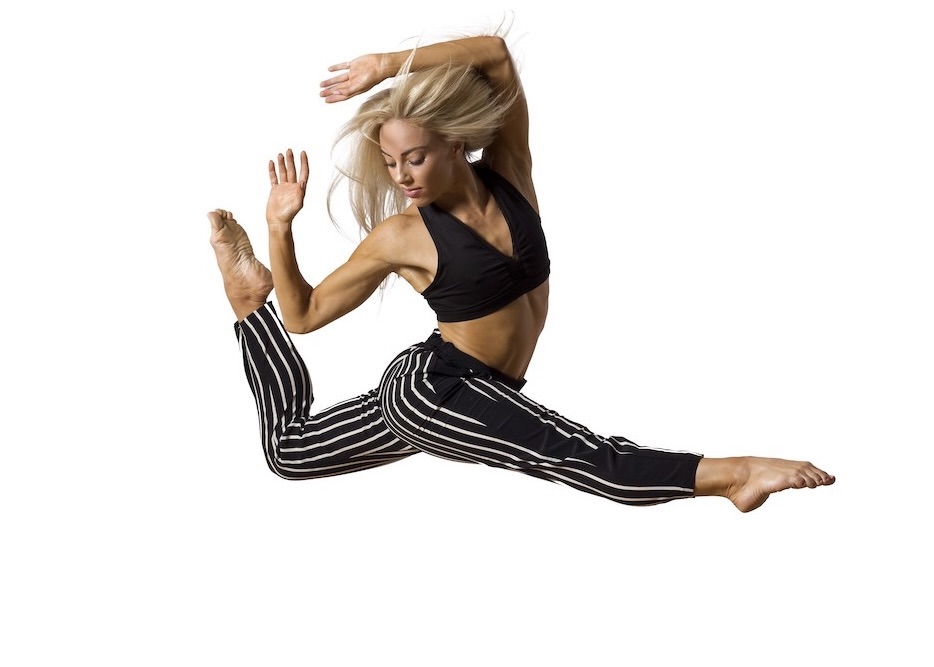David Parsons, artistic director of Parsons Dance, acknowledges that his company and much of its repertoire emerged from a long-term collaboration with Tony Award-winning lighting designer Howell Binkley. The two co-founded Parsons Dance in 1985 and worked together until Binkley’s death in 2020. That span of history will be on display this Sunday afternoon when Parsons Dance performs at Georgia State University’s Rialto Center for the Arts — fittingly, as part of the Rialto’s 2023-24 series Holding the Light.
“Howell lit every one of my pieces. I was so lucky to team up with him,” Parsons told ArtsATL in an interview.

As with many Parsons Dance performances, Sunday’s mixed bill will include Caught, the 1982 solo that put Parsons on the map as a choreographer. It is perhaps the foremost example of how Binkley contributed to the company’s signature aesthetic. In Caught, Binkley and Parsons created the illusion of flight with use of a strobe light and five minutes of gravity-defying choreography.
Though Caught usually features a male-presenting dancer, company member Zoey Anderson, a woman, will perform it on Sunday. “Zoey is a monster, the way she just attacks the movement,” said Parsons.
Parsons got his start on a scholarship to the Ailey School in New York and was a protegé of choreographer Paul Taylor. Parsons and Binkley met while both were working for the Paul Taylor Dance Company.
For almost 40 years, the innovation they incubated within Parsons Dance has influenced theater, film and dance beyond the company. Binkley’s successful career lighting Broadway shows included two Tony Awards, the most recent in 2016 for Hamilton.
Parsons has accepted commissions from companies throughout the United States and internationally, including New York City Ballet and American Ballet Theatre. He has choreographed for opera, musicals and film, including Julie Taymor’s 1992 breakthrough production for the small screen, Fool’s Fire. During John McFall’s early tenure as artistic director of Atlanta Ballet, McFall commissioned Parsons to create a work for the company.
Binkley’s final collaboration with Parsons, The Road, debuted in 2021. It is the newest work on the bill and closes the first half of Sunday’s program. Parsons choreographed The Road to music by Yusuf/Cat Stevens and said it was inspired by Yusuf’s personal and artistic journey over the course of his career. The Road questions whether a life can ever be recounted as a story of purely linear progress. The dancers move across the stage with ceaseless, peripatetic restlessness, and the piece closes with a newer re-recording of the iconic 1971 composition “Peace Train,” showing Yusuf’s circular return to old material with new attention.
Like The Road, the four remaining pieces highlight Parsons’ ongoing conversation with the forms, composers and performers of 20th century music.

The show will open with Swing Shift, a big, bold Parsons Dance staple built around what Parsons described as “massive partnering.” He aptly summarized it as a “hot, beautiful piece.” Set to an original score by Kenji Bunch, Swing Shift fills the stage with dancers in flowing costumes. Instruments used in the score surface into distinct voices, only to blend back into a harmonious whole, over and over. The choreography follows a similar pattern: Dancers lift one another and leap together in constantly shifting trios and duets, creating a kaleidoscopic constellation of convergences, mergers and separations.
The solo Balance of Power and the ensemble piece Kind of Blue evolved through Parsons’ exploration of how formal musical techniques might be translated into dance. In Balance of Power, both choreography and music build from a simple rhythmic sequence into a technical tour de force, ultimately transforming the dancer’s body into a visual cacophony of limbs and gestures. Kind of Blue takes cues from its namesake, Miles Davis’ monumental jazz hit, by using structured improvisation to keep the dance fresh, every performance unique.
The program’s final ensemble piece, Nascimento, was an early collaboration with renowned Brazilian singer and composer Milton Nascimento. Parsons said Nascimento came to see him backstage when the company was on tour in Brazil. The composer told Parsons he loved what Parsons Dance was doing, and he wanted to compose a score for the company — for free. In the resulting piece, Parsons’ nostalgic, gestural reflections on his experience as a tourist in Brazil intertwine with Nascimento’s music, itself inspired by the composer’s encounter with Parsons’ art.

Throughout, the Rialto program will showcase Parsons’ athletic, stage-devouring adaptation of Lester Horton/Ailey and Taylor techniques. Though Sunday’s program is an all-Parsons bill, Parsons said fostering the work of outside choreographers has been integral to the company’s mission. “A dancer’s career is like a minute long,” he reflected. “The way they grow during that time is getting to work with different minds.”
For Parsons, keeping talented dancers in the company means providing them with those opportunities. Consequently, Parsons Dance has produced work by more than 30 choreographers, among them Robert Battle, the former artistic director of Alvin Ailey American Dance Theater, who also spent time as a dancer with the company. Those choreographers were influenced by, and in turn have influenced, the Parsons Dance repertoire.
Like last season’s Rialto engagement of the Martha Graham Dance Company, Parsons’ show brings to the Atlanta stage important modern dance history, as well as what promises to be an afternoon of gorgeous dance. Parsons Dance last performed in the Atlanta metro area in 2021. This is a rare opportunity not to be missed.
::
Robin Wharton studied dance at the School of American Ballet and the Pacific Northwest Ballet School. As an undergraduate at Tulane University in New Orleans, she was a member of the Newcomb Dance Company. In addition to a bachelor of arts in English from Tulane, Robin holds a law degree and a Ph.D. in English, both from the University of Georgia.

